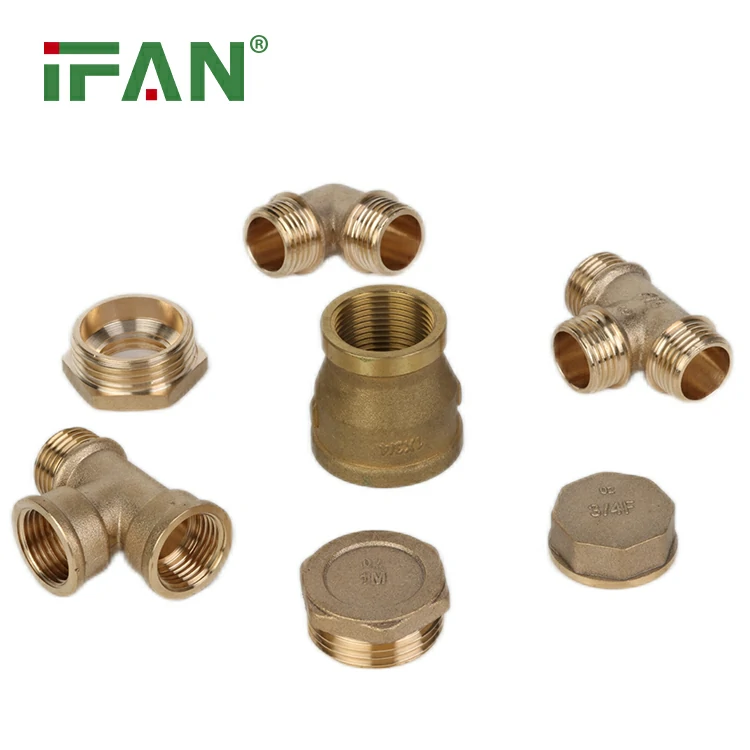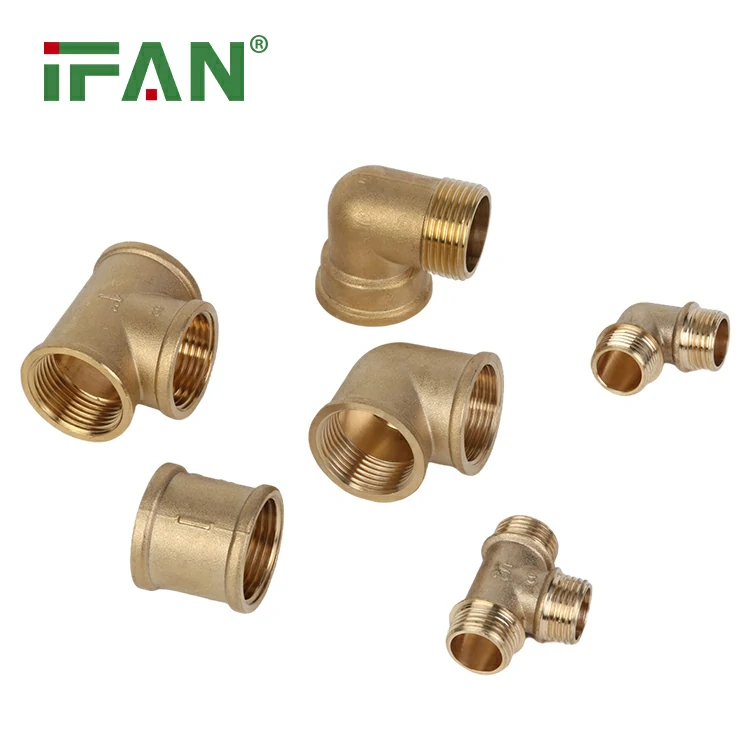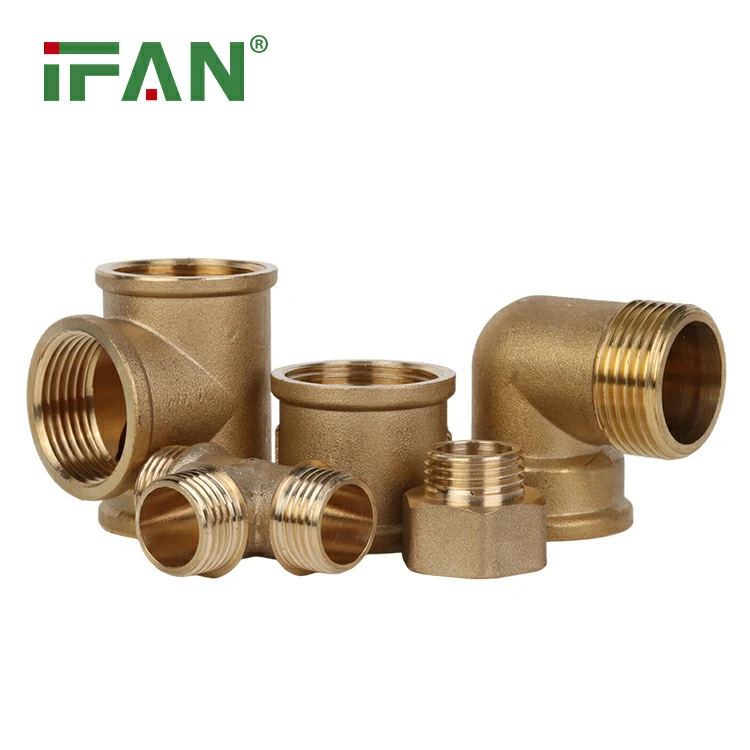IFAN factory 30+ years manufacture experience support color /size customization support free sample.Welcome to consult for catalog and free samples.This is our Facebook Website:www.facebook.com,Click to watch IFAN’s product video.Compared with Tomex products, our IFAN products from quality to price are your best choice, welcome to buy!
Brass fittings are a popular choice for a wide range of DIY projects, thanks to their durability, strength, and corrosion-resistant properties. These fittings are essential for connecting pipes, tubes, and other components in various systems, including plumbing, HVAC, and gas installations. Whether you’re a beginner or an experienced DIY enthusiast, understanding how brass fittings work, how to choose them, and how to install them can elevate the quality of your home projects. This comprehensive guide will take you through everything you need to know about brass fittings and their applications for DIY enthusiasts.
What Are Brass Fittings?
Brass fittings are mechanical components made from an alloy of copper and zinc, known as brass. The properties of brass, including its malleability, resistance to corrosion, and ability to withstand pressure, make it an ideal material for a variety of fittings used in piping systems. These fittings come in different shapes, sizes, and configurations, including elbows, couplings, tees, adapters, reducers, and unions.
Brass fittings are commonly used to connect pipes and hoses in plumbing systems, gas lines, heating systems, and even automotive repairs. They ensure secure, leak-free connections that last for a long time, making them a reliable choice for both professionals and DIYers alike.
Why Should DIY Enthusiasts Choose Brass Fittings?
Brass fittings offer numerous benefits that make them an excellent choice for DIY projects. Here are some key reasons why they are favored in home improvement and repair tasks:
1. Corrosion Resistance
Brass is highly resistant to corrosion, which is essential in applications exposed to water, air, and other environmental factors. In DIY plumbing projects or outdoor installations, brass fittings will not rust or degrade over time, ensuring that your connections remain reliable and secure for years.
2. Durability and Strength
Brass fittings are incredibly durable and able to withstand high pressure and temperatures. Whether you’re working on a heating system, a water supply, or a gas line, you can rely on the strength of brass to maintain the integrity of your system. This means fewer repairs and replacements in the future.
3. Malleability for Easy Installation
Brass fittings are relatively easy to work with due to the malleability of the material. This allows for easy shaping and adjustment during installation. Most brass fittings are designed with threads or compression fittings that are straightforward to install, making them ideal for DIY enthusiasts with limited experience.
4. Versatility
Brass fittings are available in various shapes, sizes, and configurations, making them suitable for a wide range of applications. Whether you need to connect a water pipe, repair a gas line, or set up an HVAC system, there’s a brass fitting designed to meet your needs. Their versatility means they can be used in almost any DIY project that involves fluid or gas transfer.

5. Aesthetic Appeal
While performance is the primary reason to choose brass, many DIY enthusiasts also appreciate the aesthetic quality of brass. Its shiny, golden appearance adds a touch of elegance to visible plumbing fixtures and installations, especially in kitchens and bathrooms.
Types of Brass Fittings for DIY Projects
There are several types of brass fittings available, each serving a unique function in different systems. Here are the most common types you’ll encounter in DIY applications:
1. Elbows
Elbow fittings are used to change the direction of a pipe or hose. These fittings are available in different angles (usually 45° or 90°) and can be used to navigate tight spaces or redirect the flow of water or gas.
2. Tees
A tee fitting has three ports and is typically used to branch off from a main pipe to another pipe at a 90° angle. It’s especially useful when connecting multiple lines or splitting a single supply line into multiple outlets.
3. Couplings
Couplings are used to join two pipes together. This type of brass fitting is commonly used in plumbing systems where you need to extend or repair a pipe. There are two main types of couplings: slip couplings and threaded couplings.
4. Reducers
Reducers are used when you need to connect pipes of different sizes. These fittings gradually transition from a larger pipe to a smaller pipe, ensuring a secure connection and a steady flow of water or gas.
5. Unions
Unions are similar to couplings, but they are designed to be easily disconnected and reconnected. These fittings are especially useful in systems that require frequent maintenance or disassembly.
6. Adapters
Brass adapters are used to connect two pipes with different thread types or sizes. They can also be used to connect various plumbing systems, including connecting a pipe to a hose or faucet.
7. Caps and Plugs
Caps and plugs are used to seal the ends of pipes, preventing leaks and ensuring that fluid doesn’t escape. These fittings are especially important during repairs or when a pipe is temporarily not in use.
How to Choose the Right Brass Fitting for Your DIY Project
Selecting the correct brass fitting for your DIY project is crucial to ensure the longevity and effectiveness of your system. Here are a few tips to help you choose the right fitting:
1. Consider the Application
The type of system you’re working on will dictate the type of brass fitting you’ll need. For example, plumbing projects will typically require couplings, elbows, or tees, while gas lines may require specialized fittings like unions or threaded adapters.
2. Check the Size and Threading
Make sure to choose brass fittings that are compatible with the size and threading of your pipes. Brass fittings come in different sizes and thread types, so it’s essential to measure your pipes accurately and choose fittings that match.
3. Determine Pressure and Temperature Ratings
Brass fittings are rated for specific pressure and temperature ranges. Ensure that the fitting you choose can handle the demands of your system. If you’re working with high-pressure systems or hot water, check the specifications to avoid issues.
4. Quality Matters
While brass fittings are generally reliable, the quality can vary depending on the manufacturer. Look for fittings made from high-quality brass to ensure they’ll last longer and provide a leak-free connection. Always buy fittings from reputable suppliers.
How to Install Brass Fittings
Installing brass fittings is a straightforward process, but it requires attention to detail to ensure a secure connection. Here are the basic steps for installing brass fittings in a DIY project:
- Clean the Pipe Ends: Before attaching any fittings, clean the pipe ends to remove dirt, debris, or old sealant. This ensures a tight and leak-free seal.
- Apply Thread Sealant (if needed): For threaded fittings, apply a thread sealant or Teflon tape to the threads to prevent leaks.
- Screw the Fittings Together: If you’re using threaded brass fittings, simply screw them onto the pipe and tighten them with a wrench. If you’re using compression fittings, make sure to tighten the compression nut securely.
- Check for Leaks: After installation, turn on the water or gas supply and check for any leaks. If you notice any, tighten the fittings or reapply sealant as needed.
Common DIY Projects Using Brass Fittings
- Plumbing Repairs and Installations: Brass fittings are ideal for fixing leaks, replacing pipes, or installing new plumbing fixtures.
- Gas Line Repairs: When working with gas lines, brass fittings offer a safe and durable solution to prevent leaks and ensure secure connections.
- HVAC Systems: Brass fittings can be used to connect pipes and hoses in heating and cooling systems, ensuring efficiency and durability.
- Outdoor Irrigation Systems: Brass fittings are excellent for use in irrigation systems, providing long-lasting connections that can withstand outdoor conditions.
Frequently Asked Questions (FAQs)
1. What are the benefits of using brass fittings for DIY projects?
Brass fittings are durable, corrosion-resistant, and versatile. They provide long-lasting, leak-free connections, making them an excellent choice for plumbing, gas lines, and other systems.
2. Can I use brass fittings for both water and gas lines?
Yes, brass fittings are commonly used in both water and gas lines. They offer reliable and secure connections for both types of systems.
3. How do I know what size brass fitting to use?
Measure the diameter of the pipe you are connecting and match it to the size of the brass fitting. Ensure that the threading or compression fitting is compatible with your pipe.
4. Are brass fittings difficult to install for beginners?
No, brass fittings are relatively easy to install, especially when using threaded or compression types. Just follow the manufacturer’s instructions and ensure tight connections.
5. Can brass fittings withstand high temperatures?
Yes, brass fittings can withstand high temperatures, making them suitable for hot water systems, steam lines, and other high-temperature applications.





